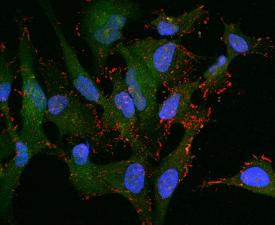What are the Signs and Symptoms of Cervical Cancer?
January 26, 2021
Cervical cancer is cancer of the cervix, or lower portion of the uterus. At one time, cervical cancer was the leading cause of cancer death in women in the United States.

Since then, screening tests for cervical cancer, such as the Pap test and the human papillomavirus (HPV) test, have facilitated detection of the disease at earlier stages, resulting in a 5-year survival rate of 92% in women diagnosed with localized stages of the disease, where no metastasis or spreading of the cancer has occurred.1 In recognition of Cervical Cancer Awareness Month this January, we highlight the signs and symptoms of cervical cancer, HPV infection and steps you can take if you or someone you care about is experiencing symptoms consistent with the disease.
The early stages of cervical cancer have few, if any symptoms, making screening tests for the disease vital for early-stage diagnosis. Signs and symptoms of more advanced stages of cervical cancer can include:
- Pelvic pain
- Pain during intercourse
- Bloody, watery vaginal discharge that may be heavy and foul smelling
- Vaginal bleeding after intercourse, menopause or between periods
If you or someone you care about is experiencing any of these symptoms, even if a Pap or HPV screening test was recently performed, it is important to see a doctor for evaluation.
Nearly all cervical cancers are caused by infection with high-risk types of HPV, and 70% percent of cervical cancers caused by HPV are caused by types HPV-16 or HPV-18.2 HPV infections are actually common and typically cleared by the immune system over time. In some people and with some types of HPV, however, infections can become chronic and may result in cancer development. In order to detect cervical cancer at earlier stages, screening HPV tests detect current HPV infection and whether or not the infection is caused by a high-risk type. Additionally, screening Pap tests can detect abnormal changes in cervical cells caused by HPV infection. The American Cancer Society recently revised their screening guidelines, recommending that anyone with a cervix be screened with an HPV test alone every five years from ages 25 to 65.3 If the HPV test is not available by itself, a combined HPV/Pap test every five years or a Pap test every three years is also acceptable. A vaccine for high-risk types of HVP, Gardasil 9, is recommended by the Centers for Disease Control for both boys and girls to prevent future cervical cancer diagnoses and is approved by the U.S. Food and Drug Administration for use in males and females from 9 to 45 years of age.
Some cancers can run in families. And despite the fact that the vast majority of cervical cancers are caused by HPV infection, a small number of familial cases of the disease do exist. While no specific gene mutations, or changes, have been associated with an increased risk of developing cervical cancer, researchers suspect that inherited conditions that alter the body’s ability to clear HPV infection may increase the risk of developing the disease in some families. Additionally, family members are more likely to share various non-genetic risk factors for cervical cancer. While genetic screening tests for hereditary cervical cancer risk do not yet exist, comprehensive screens for a large number of hereditary cancer syndromes are currently available. The ExpedioTM Hereditary Cancer Screening test, developed by Kailos Genetics, screens 33 genes for mutations associated with an increased risk of cancer development, allowing healthcare providers to tailor a disease screening plan based on each patient’s unique risks. Click here to learn more about ExpedioTM, or contact us with any questions you may have regarding our genetic screenings.




